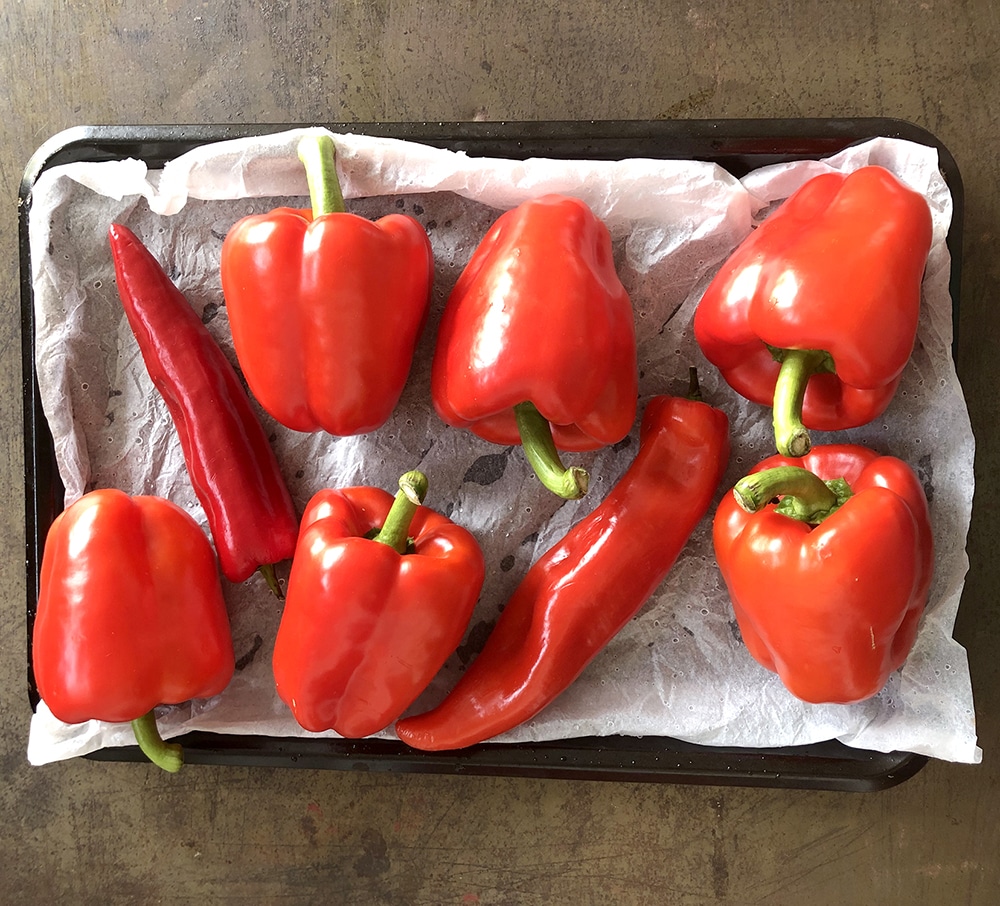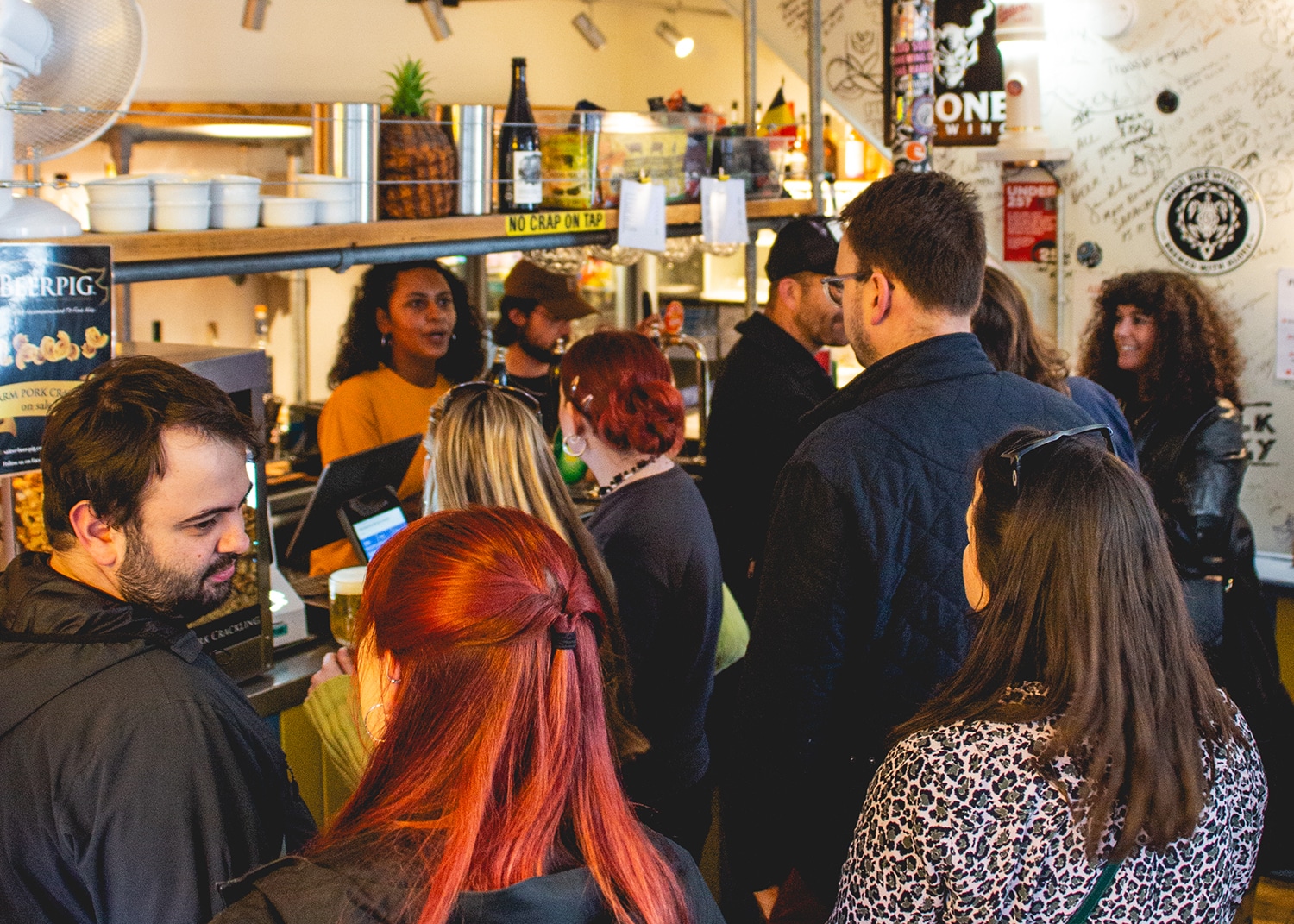Cynthia’s pepper pork neck
Cynthia Shanmugalingam, chef-owner of Rambutan, on her favourite fire-cooked dish
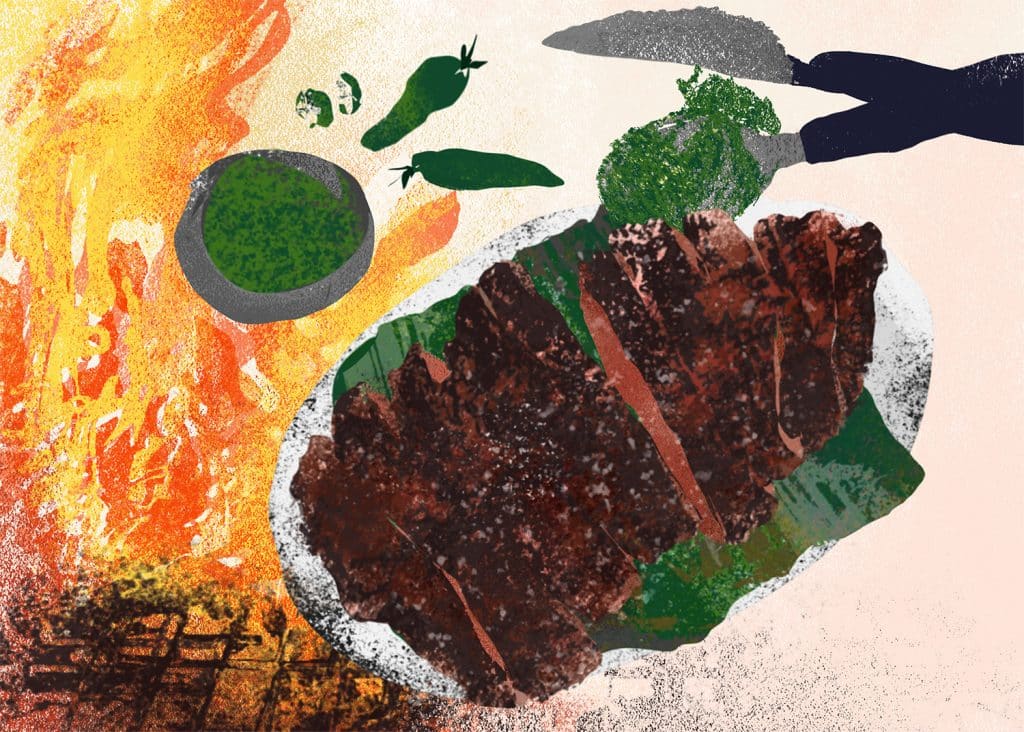

“COOKING OVER FIRE IS A WHOLE PROCESS. IT’S NOT LIKE SWITCHING ON AN OVEN – AND THAT’S WHAT MAKES IT SO EXCITING”
Interview: Mark Riddaway / Illustration: Megan St Clair / Portrait: Carol Sachs
As barbecue season kicks into gear, some of Borough Market’s experts have been sharing the secrets of their favourite fire-cooked dishes. Cynthia Shanmugalingam is the chef-owner of the Rambutan restaurant, where one of the most popular dishes cooked over coals is pork neck in a bright, peppery marinade.
Born and raised in England but with roots in Sri Lanka, Cynthia finds inspiration in the vibrant food culture of her ancestral home but views it through the unique lens of her British upbringing and global travels. At the heart of her Borough restaurant is a large charcoal grill. “There’s something magical about walking into a space where a fire is going,” she says, “and it’s fun for the chefs, who love learning how to deal with fire.”
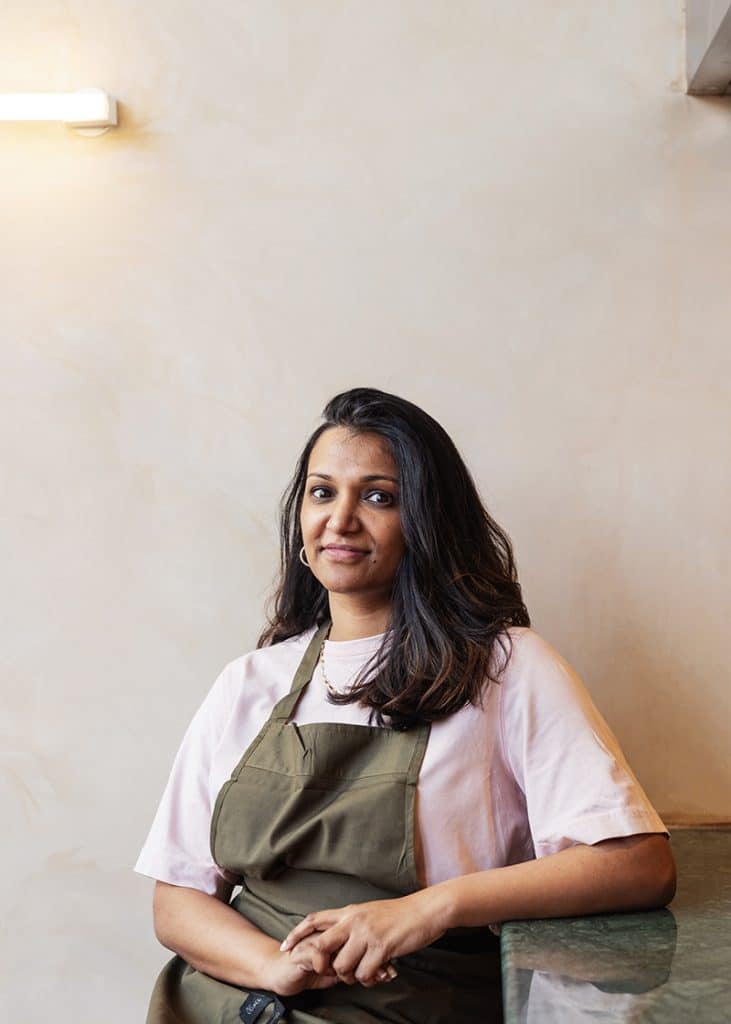
The dish
Pork neck is a lovely, forgiving cut of meat to cook over charcoal. We marinate it in lots of Sri Lankan black pepper, which is the real star of the show – super-fragrant, almost floral. There’s also some cumin, some ginger and garlic and a little bit of kithul jaggery syrup to give it a touch of sweetness (although you could use maple syrup instead). We grill the pork then serve it with a pickled chilli sambal, which is basically green chillies, vinegar and sugar: hot and sharp, to cut through the pork.
The inspiration
Sri Lankans don’t actually have a big tradition of grilling. Fire cooking is fundamental to Sri Lankan cuisine, but they tend to build a fire and then cook curries in clay pots over the flames. Rambutan is not a super-traditional Sri Lankan restaurant, though. I was born in England, grew up here and travelled around a lot, all over the world, so this place is a mix of all my influences. I wanted to have a charcoal grill front and centre, but grilling Sri Lankan food requires a little bit of adaptation. We might, for example, take a traditional curry recipe and then recreate the flavours through a marinade or a dry rub. This pork dish was invented by one of our young chefs, Jack, who was inspired by black pepper beef, a classic Sri Lankan curry from the west of the country.
The ingredients
The pork in Sri Lanka is fantastic quality – there are all these small, dense pigs that run around all the time and are just so flavourful. Over here, we’re looking for that same depth of flavour, and that can only come from animals that have got space to roam and are fed and reared amazingly well. We use Middle White pork from Swaledale in Yorkshire. The taste of the meat is so deep, it’s almost gamey. The quality of the black pepper is also essential. It’s known as Malabar pepper, produced down the Malabar coast of southern India and into Sri Lanka. It’s so good that wars have been fought over it! ‘Black gold’, they used to call it. It’s really floral. Bright and fragrant. Almost citrussy.
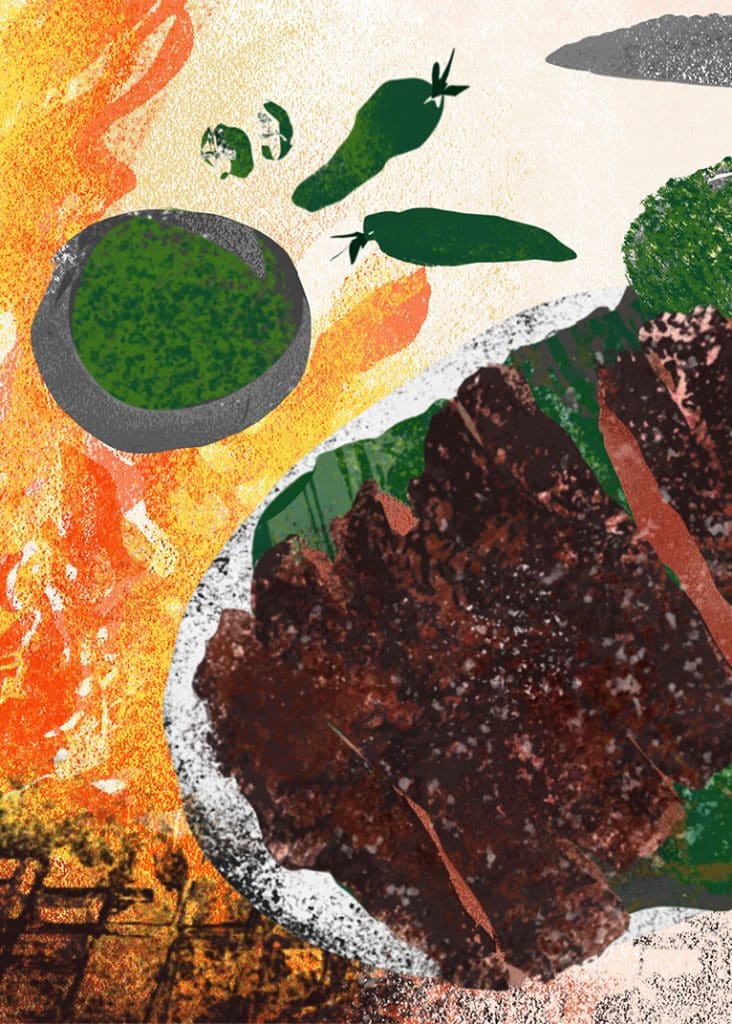
The method
We grill the pork over the hottest part of the charcoal, so it doesn’t take long – a few minutes each side. We cook it to an internal temperature of 45C, then let it rest for about five minutes. It’s at its best when it’s still slightly blush inside, as long as the guests are okay with that.
The fuel
We use pure lumpwood charcoal with no chemicals. It gets good and hot and retains its heat very well. I feel that if there’s anything chemical in the charcoal, you can really taste it, so we only use the best quality charcoal we can get our hands on.
The appeal
Fire is magical, fire is mesmerising. Cooking over fire is a whole process – it’s not like switching on an oven – and I think that’s partly what makes it so exciting. In Sri Lanka, most cooking is done over wood, so you have to build the fire first – the big sticks, the little ones, the paper – and that makes it so involving. It also imparts the amazing aromas and flavours of the smoke. In Sri Lanka, try as the government might to bring in gas or electricity, the women – and it is largely women who do the cooking – still want to cook over wood. They just feel there’s nothing quite like those incredible smoky flavours.
The pro tip
People should grill more vegetables! We put lots of veg on our grill – the sugars caramelise, and they take on such an amazing quality. Aubergine, corn, broccoli, anything. Often, if you go to someone’s house for a barbecue, it’ll be the meat that gets the focus, but vegetables can be just as delicious.
